This is not a a paradigm-obliterating viral map. Boston is 46% water and this shows where it all is. Most of the water is offshore. Some of it is inland.
But what if you don’t care where it all is? That little chart in the corner shows the same proportions. It’s a geography teaching tool, without employing—er… geography.
Comparative Geography: Land v. Water
A few years ago, I stumbled on a genre of dusty old geography books: the elementary text book. One of my favorites, Methods and Aids in Geography (1888), features numerous comparative geography illustrations.
At the time, for example, the population of all of New England and New Jersey was equal to that of London and its suburbs. The book also sports maps (which we’ve seen recently, ad nauseam, like number 7 here) comparing state areas to country areas, countries to countries, continents to continents, planets to… ugh, you understand.
Of all the great gems in this book, there is one chart that especially caught my eye, a sort of proto-treemap, comparing the world’s land and water areas.
I like the simplicity of this chart and since Massachusetts is so watery, I decided to reproduce it for our fair state.
I crammed all of these guys…
Into this chart:
You can be the judge, but I think if you’re looking for area comparisons, this works better than a map. Like, say, this map:
Bonus Map!!!!11!!11!
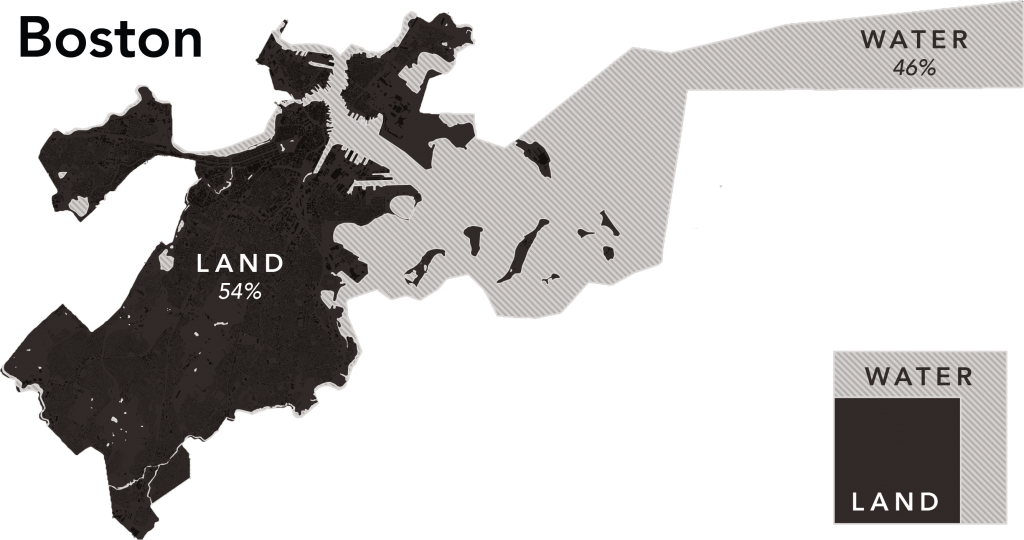
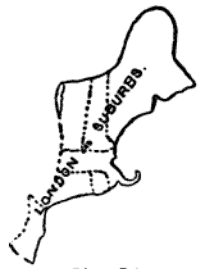
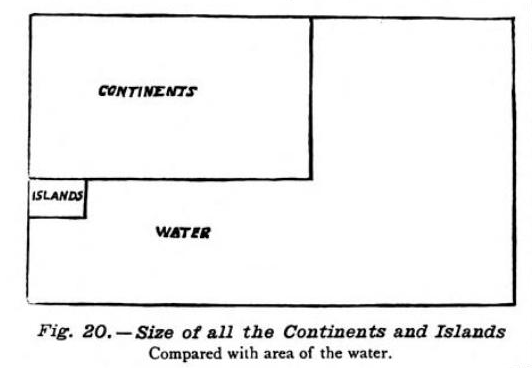
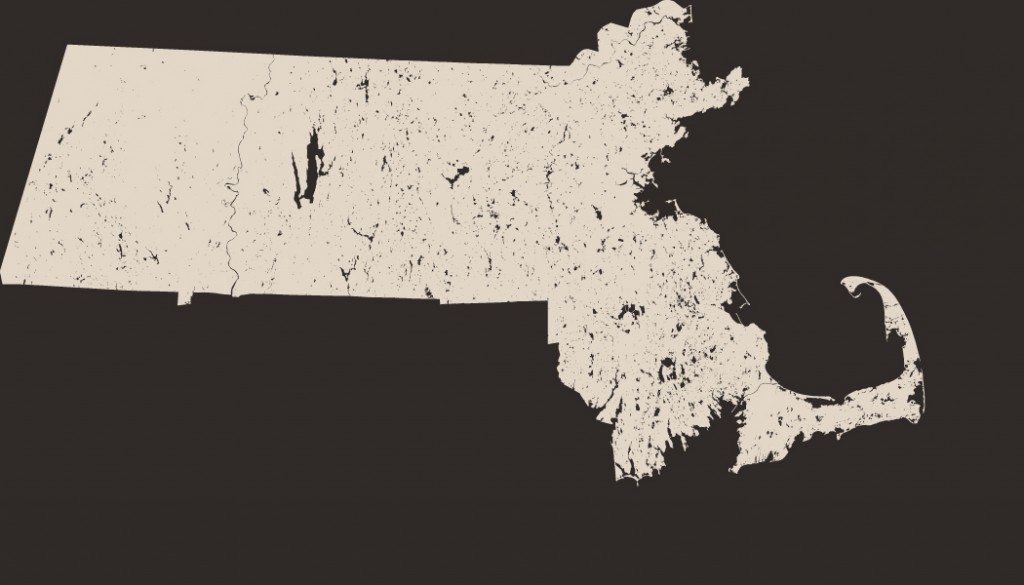

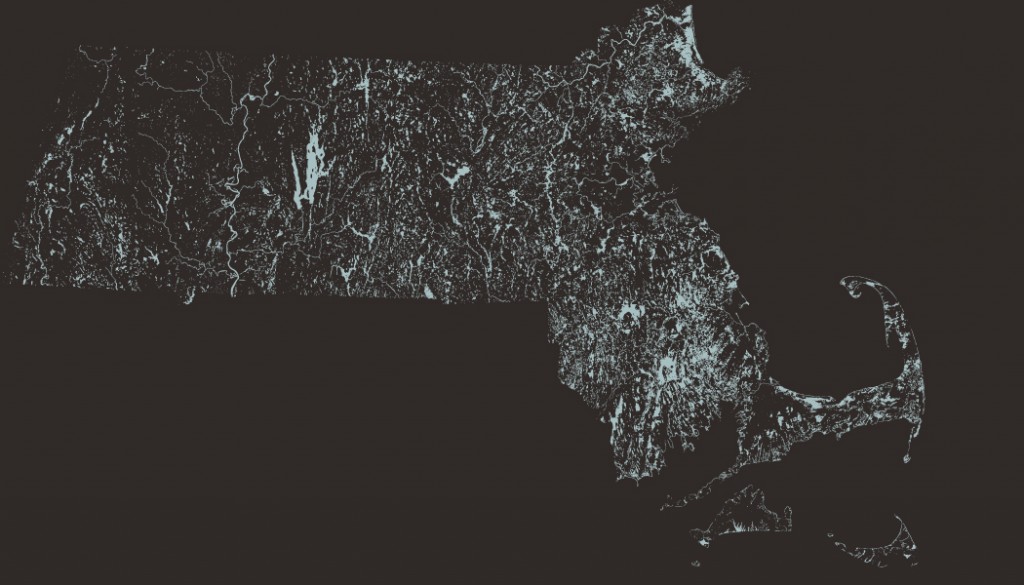
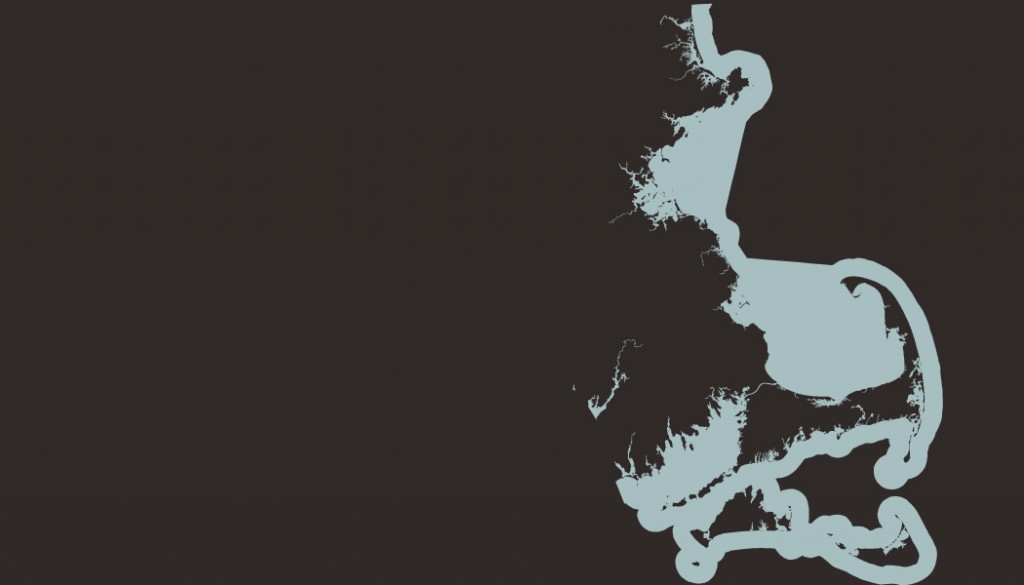
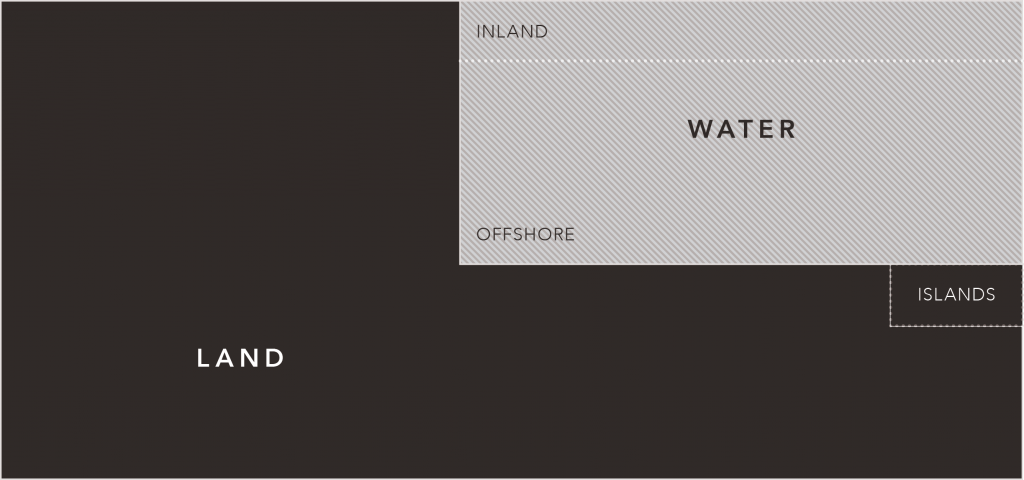
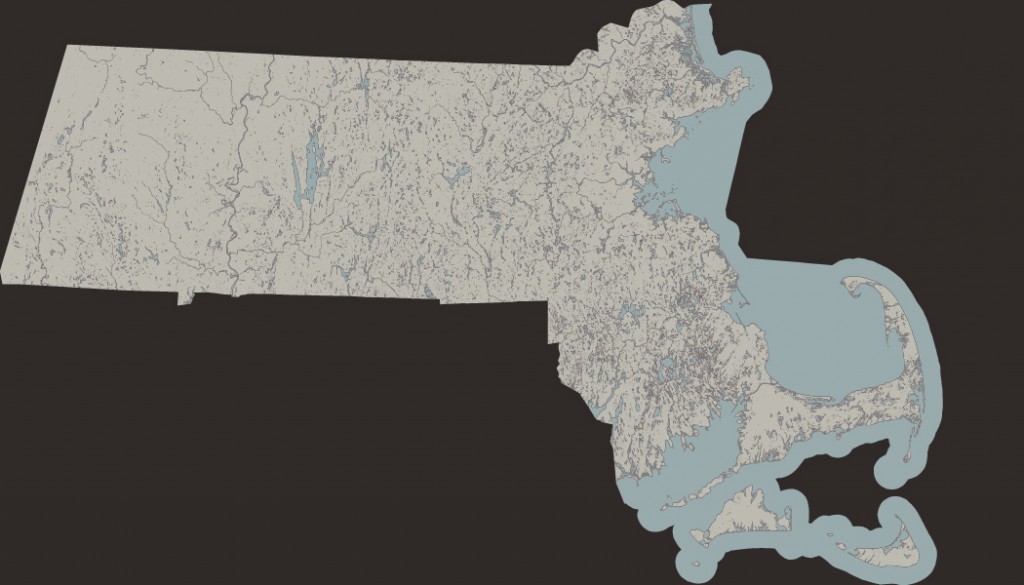
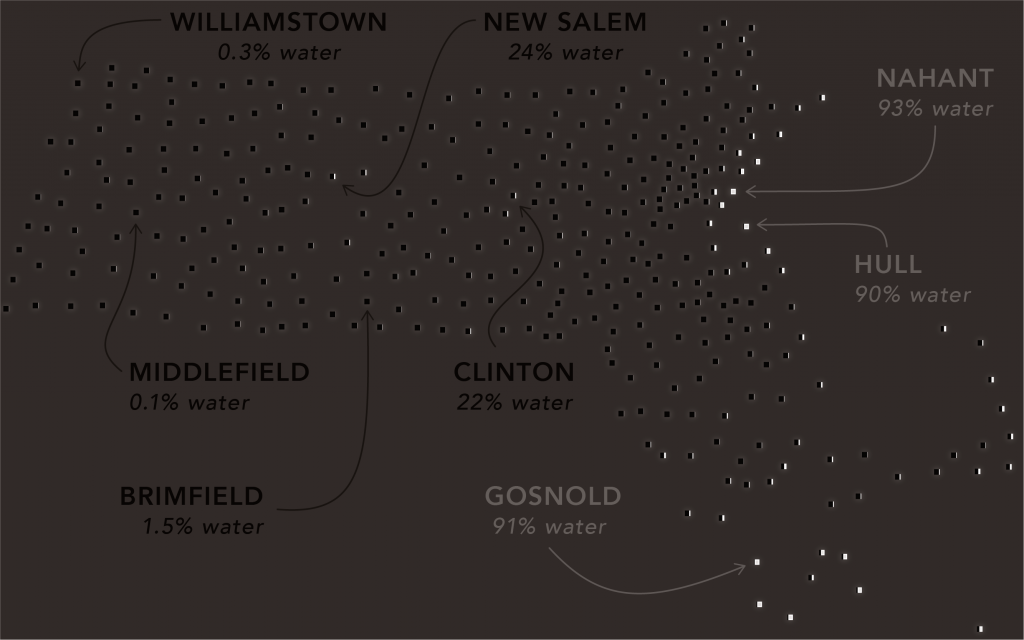
This begs the question: what the heck is all that offshore water that belongs to Boston?
Yes. We’ve been wondering this very thing.
The boundary I’ve mapped here is from the U.S. Census Tiger shapefile, but I’m not sure of the history of how this particular boundary was whittled down over time.
I’d guess it has something to do with ship traffic and their route into Boston harbor.
I don’t think these resources will have the answer you’re after, but here’s a fun PDF of a Boston and Brookline boundary atlas from 1902 which, along with every other town in Massachusetts, is grabbable from here.